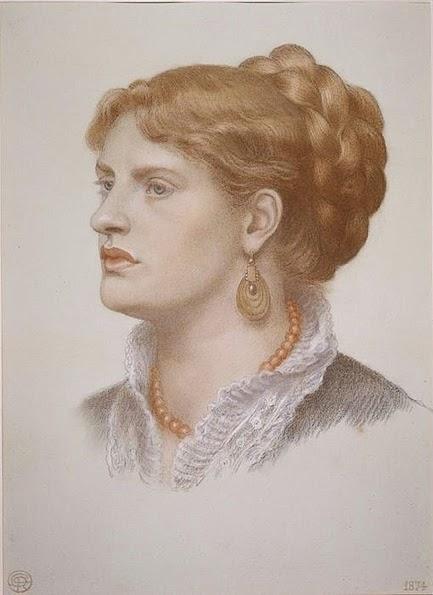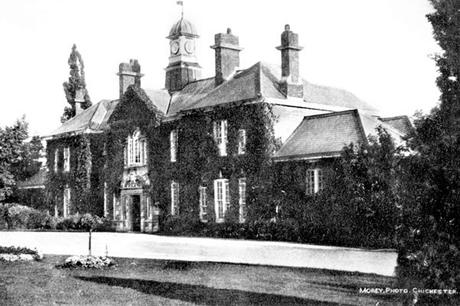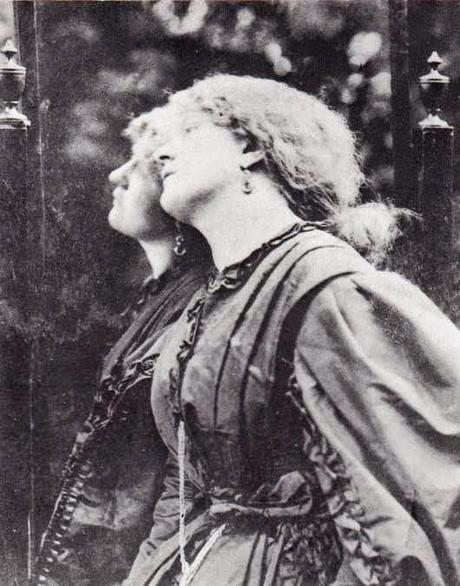
The Blue Bower (1865) D G Rossetti
If you will remember from past posts and from Stunner: The Fall and Rise of Fanny Cornforth, Fanny lived in Hammersmith in London, corresponding with Samuel Bancroft jnr at the turn of the last century. She is listed in the 1901 census as living in Kilmarsh Road as a lodger. Her letters to Bancroft the American art collector are filled with complaints about the treatment she received at the hands of her sister-in-law, Rosa Villiers, who allowed her little money, despite the family being wealthy. Then in 1905, all of a sudden, she vanished.
Fanny Cornforth (1874) D G Rossetti
Bancroft was left puzzled and the only news he received when he attempted to find Fanny was that she had become difficult and Rosa had swooped in and taken her off, presumably to live with her in Hove, on the south coast of England. Sadly, that was not exactly the case. Rosa had removed Fanny to the south coast, but placed her in the care of the Workhouse in West Sussex, where she was cared for in a small town outside Chichester. Then she became too much for her landlady Ann Humphrey to deal with so she was taken to Graylingwell Asylum.
West Sussex Hospital - Graylingwell Asylum
Graylingwell was formerly a farm and the home of Black Beauty author Anna Sewell. It was redesigned and built to be an asylum, opening its doors in 1897, just outside of the town of Chichester in West Sussex. At the time of her admission on 30 March 1907, Fanny (now properly referred to as Sarah Schott/Hughes) was recorded as 5'3" and weighing almost 12 stone. She was described as stout and physically well, her hair brown-grey, her eyes green-grey, with upper and lower dentures. She was very deaf. Her landlady blamed her mental state on the fact that she had been taken to a workhouse 'against her will' (presumably by Rosa) which had rightly distressed her. It is mentioned that she had a bad temper. Her first examination listed senile mania, confusion, weak-mindedness, unable to sustain a rational conversation, without memory and sleepless. She maintained her health in the following few months of examination, despite her mental health being impaired, and was garrulous but incoherant and very excitable. The asylum was told that Fanny had been strange in her manner for some time and behaved violently towards her landlady who she perceived as a threat, calling the police against her.She passed the summer peacefully, causing very little trouble, but suffered a fall which broke her arm in September 1907. That began a downturn in her mental and physical health. The fall and subsequent medical assistance distressed her and made her violent. She refused treatment, ripping the bandages from her injured arm and causing hemorrhage and severe bruising. The wrist mended, but remained deformed. Fanny's general health deteriorated and she became confused. She is listed in 1908 as having senile dementia and the nurses that were required to care for her failing health received spiteful treatment from their patient.

Fair Rosamund D G Rossetti
In September 1908, Fanny contracted bronchitis severely. It lingered, rendering her weak, both mentally and physically but it was noted that even then she remained obstinate, her bloody-minded spirit surviving despite the trials she suffered. By February 1909 she was confined to her bed, needing constant nursing. Pneumonia developed in her battered lungs and she died on February 24th 1909. She was buried in the grounds of Graylingwell Asylum. She was 74 years old.
There is a final, heartbreaking piece of this story I am not able to bring you today. Attached to her record from Graylingwell Asylum was a photograph of Fanny Cornforth aged 71 years old. She was wearing a black dress with a lace collar, slightly askew and she looks both terrified and belligerent. In many ways it is better that we remember her in her glory than like that as I cried like a baby when I saw it. I hope to be able to reproduce it in the near future, but much like the image of Jane Morris in old age, it is a bitter sweet photograph. Better perhaps to remember her in happier times, in the garden of Tudor House.

Fanny Cornforth / Sarah Hughes (1863)
Many, many thanks are due to Lynda Denyer from Steyning Museum for the tip off and invaluable help, to Karen Kivlehan for spotting the newly published lunacy record on Ancestry and setting us on this path of sad discovery and to the kind staff at the West Sussex Records Office for their help and the tissues.
